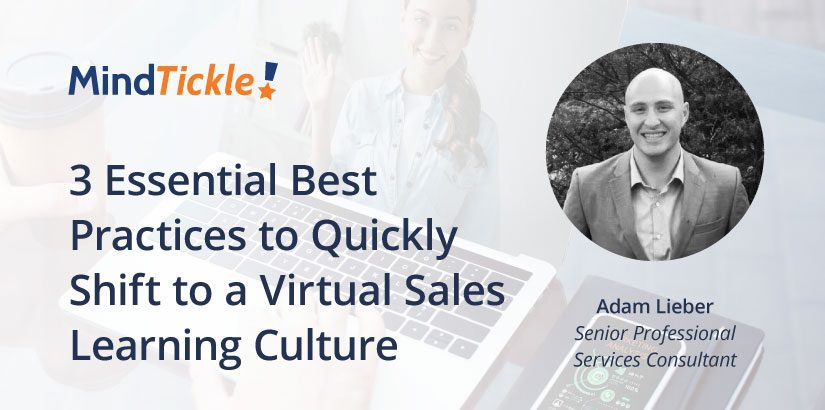As our nation endures another week of the COVID-19 pandemic, we at Mindtickle are acutely aware of the toll the virus is taking on lives and businesses, including our customers and partners and the extended enablement community. Indeed, with active shelter-in-place mandates issued for the majority of the US and around the globe, so many in sales, specifically, are working from home. In an effort to keep things moving, many events and meetings are being held virtually. They include QBRs, sales kickoffs, new-hire bootcamps, training sessions and other in-person meetings. Amid this new reality, how can sales enablement leaders make sure reps continue on their learning path in a virtual sales culture, especially when the work-from-home environment is chaotic and full of distractions like kids, roommates, spouses, pets and the perpetually full laundry basket?
The first thing to consider when rolling out any kind of virtual sales training is keeping the learner engaged by making training more consumable. Sales enablement leaders shouldn’t expect that a homebound learner — beset with myriad distractions — can sit down in front of their computer, rapt with attention, for hours of training. Rather, they should consider designing their online enablement program to deliver training in bite-sized chunks, starting with just the essential points of a topic. To ensure learners are taking it all in, include knowledge check questions that drive home whatever is most important in that training.
Practice is another essential element that should be built into virtual sales training. Role play is a good way to practice what was learned or what skill the rep is trying to develop. And, to round it out, there should be some mechanism for providing feedback (ideally in real time) that can then be considered and applied to the rep’s next round of practice. With that, not only does practice like this help focus on revenue-generating activities and displaying the skills involved, it also helps create a culture of learning buoyed by the excitement of seeing growth and development.
Just as important as the teach, show, and practice elements of virtual sales training is reinforcement. Studies show that adults tend to lose 70% of what they learned within 30 days of learning the information. Because of this, it is important to get ahead of the forgetting curve by reinforcing the knowledge that they should have learned. In addition to helping cement the knowledge in your rep’s heads, it will help you identify gaps within the knowledge sets of your teams to help you target the next areas of development. When skills and information that has been taught, shown and practiced are reinforced periodically with quiz questions pushed out to mobile phones or laptops, reps have a leg up on the so-called “Forgetting Curve.” They’re more likely to retain what they’ve learned — the knowledge becomes permanently etched in their memory.
It’s also important to remember that learning is never over; rather, it’s an ongoing process of teach, show, practice, reinforce, and teach again; there’s always something new to learn about in any given industry (like a market trend, product or service, regulation, etc.).
Training is critical for all sales professionals, but it’s not necessarily the one thing they look forward to in their job. That’s why virtual learning can be tricky. Sales enablement leaders must, therefore, empower the homebound sales rep with the ability to control how they’re learning and at what pace. With the simple best practices outlined here, they can continue to support and encourage stuck-at-home sales reps in their learning journey.



 By Poornima Mohandas
By Poornima Mohandas
 By Vivian Batman
By Vivian Batman
 By Rahul Mathew
By Rahul Mathew